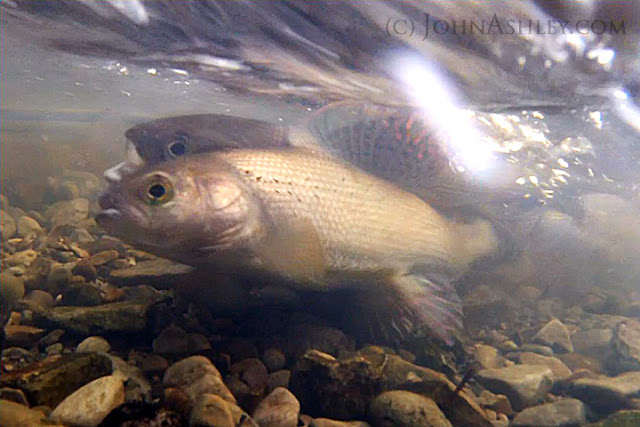 |
| Mother Loon on her nest on Mother's Day morning |
Loons normally lay two eggs, but sometimes only one and -- rarely -- three eggs. The 28 days of incubation is the passive portion of Loon parenthood. The real test begins on the morning after the last egg hatches. That's when the family will leave the nest for good, and the adults will have to defend their little chicks from the resident Bald Eagles, who also have young to feed.
 |
| Click to see two fuzzy Bald Eagle chicks |
Eagle eggs hatch 1-2 days apart, and the elder chick should be about 8 days old today. Both of the wobbly chicks are standing up in the nest, just now becoming visible. The chicks have downy feathers, but both parents will take turns keeping the youngsters warm by brooding them about 80% of the time during their first 10 days. Time spent brooding will gradually decrease over the next six weeks, as the youngsters grow big enough to maintain their own body temperature. Before fledging from their nest, a female juvenile will be bigger and heavier than her father.
 |
| Male Bufflehead |
Just a short distance uphill from the Bufflehead, thousands of Arctic Grayling were busy spawning in the little creek that flows into our lake. The adult males and females began working upstream two weeks ago, and their numbers are just now peaking in the neighborhood of 5,000 to 7,000 fish. It'll be another two weeks before they've all returned to the lake. Spawning in the shallow creek is dangerous and difficult, but most of the grayling will survive to spawn another day.
 |
| A male Arctic Grayling (front) fertilizes the eggs released by a female (rear) in a shallow stream. |
Grayling don't spawn until they're 2 to 5 years old, and they only live for 5 or 6 years. When they move up into the spawning stream, the dominant, older males defend territories over the best gravel beds for almost a week, while the females swim freely among them. Instead of excavating "reds" in the gravel, they will broadcast spawn. The female swims up next to the male(s) of her choice, and both will begin a trembling dance -- the result of straining to squeeze out the eggs and sperm that briefly mingle before settling into the tiny crevices between the rocks and gravel.
After the tiny fry hatch, they'll spend 3 to 4 days hiding in the gravel before emerging to swim up or downstream to a refuge. Fry disproportionately select stream reaches that have slower, shallower water with some sort of vegetative cover. The limbs and branches will help to hide them from the eyes of our resident Kingfishers, at least until they are big enough to swim down to the lake.
 |
| Female Belted Kingfisher |
Could this bird be her? Is she nesting in the neighborhood this year? Will we get to watch her feeding youngsters sometime soon?
Last year, watching the Kingfisher fly from our hands made Mothers' Day for both of us. This year, watching her fly over our canoe was just the icing on a many-layered cake.

